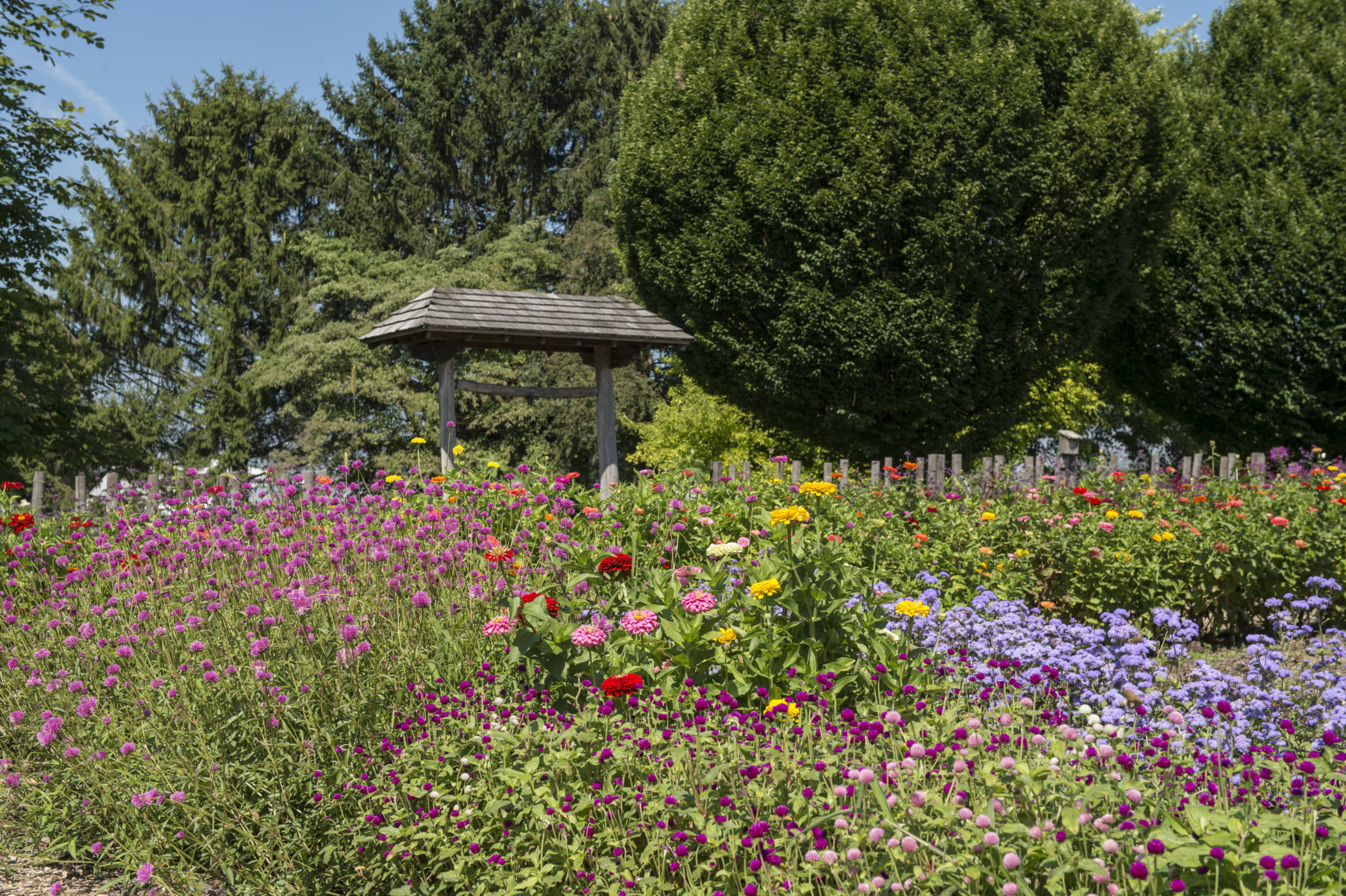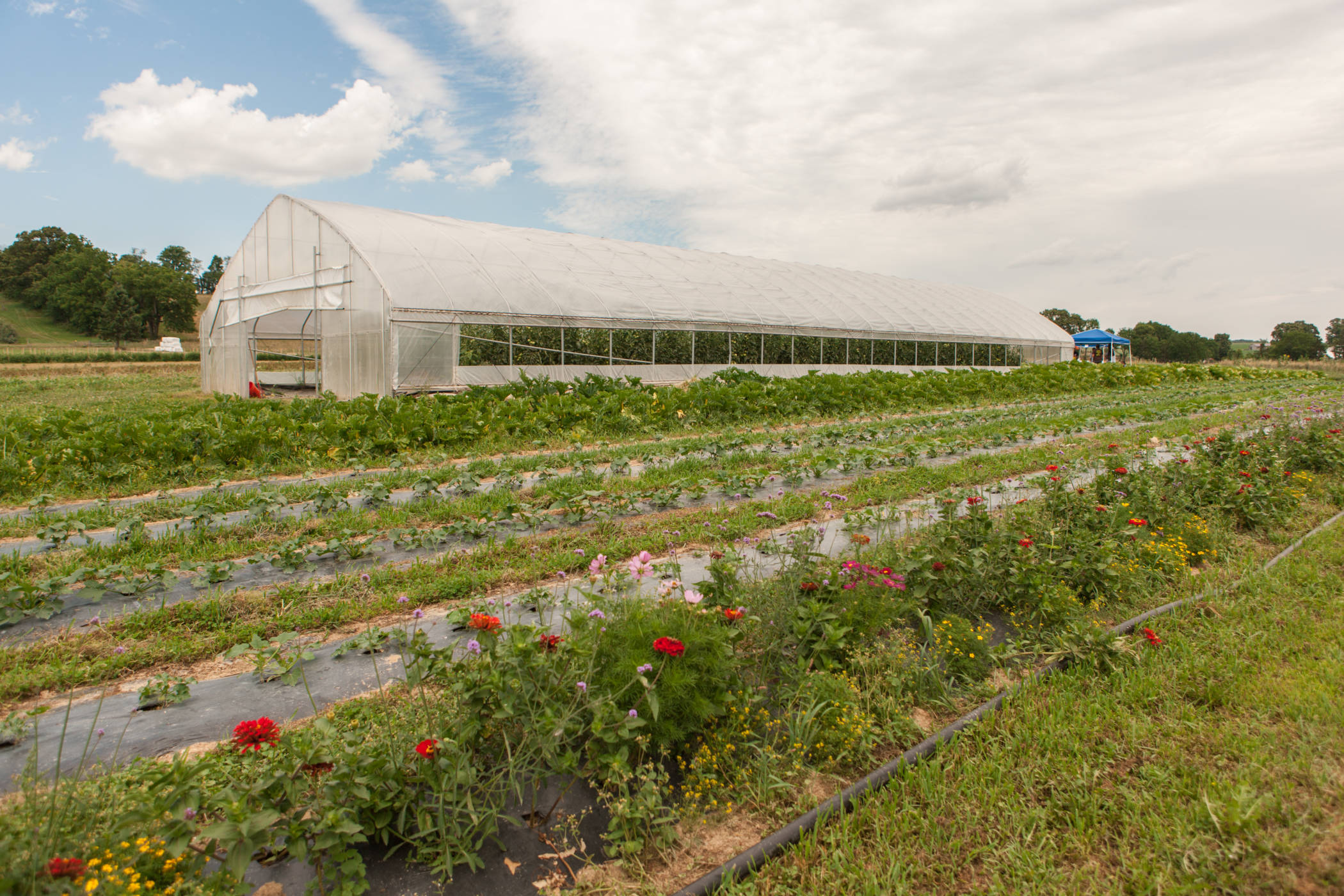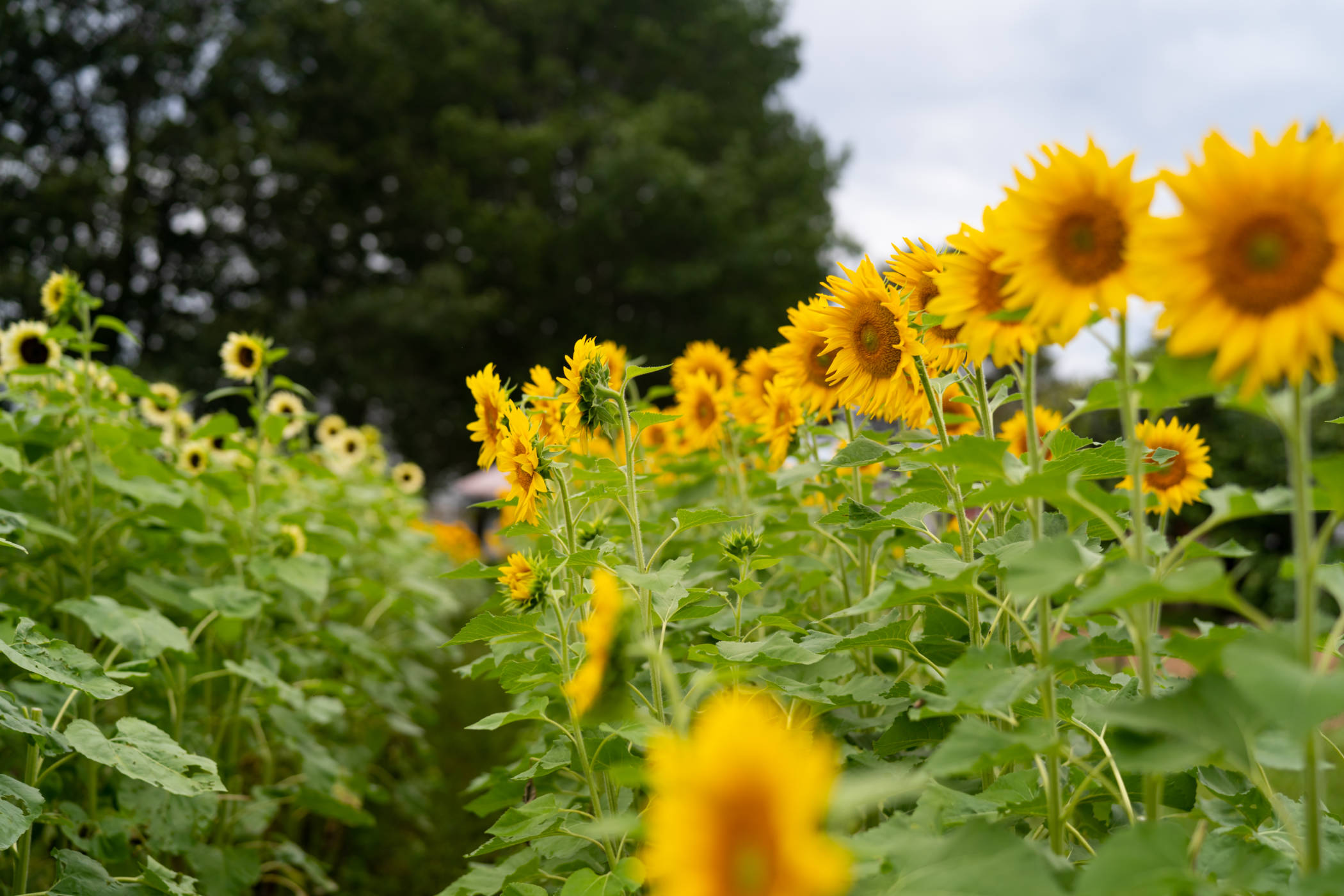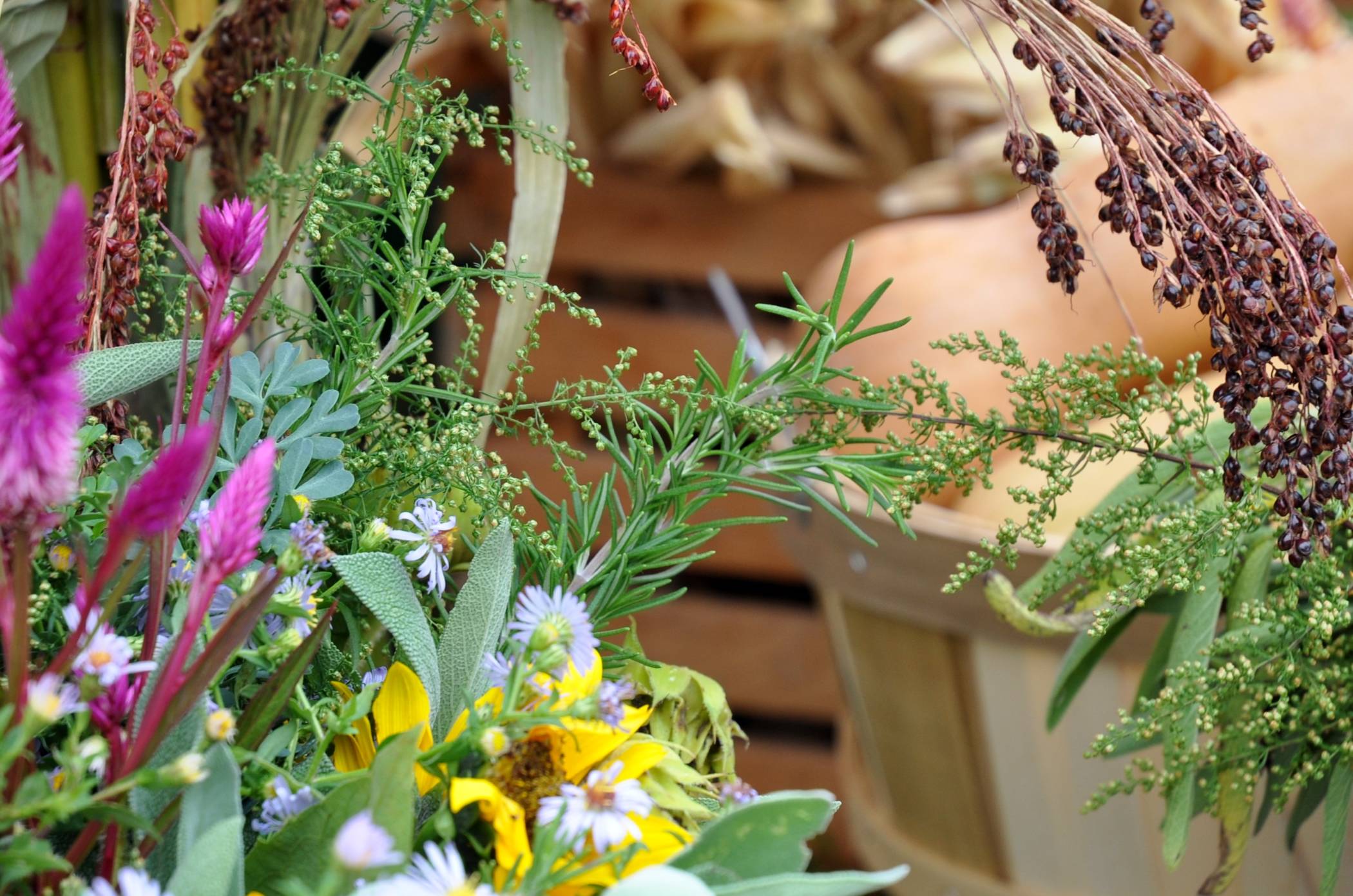Originally posted in New Farm on June 27, 2003
A new farmers’ market was forming in our area of Pennsylvania, and some 15 eager farmers recently gathered to establish rules and to get acquainted. Many of us have sold at other markets, but a few were obviously looking forward to this fun-filled and lucrative venture, totally clueless to what really awaited them.
“Now, what do we do if it rains?” asked one young, eager participant.
“You get wet!” I blurted out.
OK, I sometimes have no control over my mouth. Heads nodded, and knowing smiles erupted around the room. He was clearly expecting a different answer. But when you do a farmers’ market, there are no “rain dates.” Awnings aren’t real helpful in a torrential downpour. And Mother Nature always manages to add just enough wind to give you a sideways soak to drive home the point that She rules.
OK, this column is a bit off course, but we’ve had the most e-mails asking about Farmers’ Marketing 101. While many markets begin the season in April or May, many others start in mid-July. So here goes.

The wet, the cold, and the sweaty
It’s not all fun, and it’s not always lucrative. You work in the pouring rain. You work in the broiling sun. You need to be consistent to have repeat customers, and the first year of any market is often slow until enough people find out about it and change their schedule to include you often. You’ll inevitably see a customer manhandle your beautiful flowers and then make some inappropriate comment about the “high price” (while holding a flavored coffee she paid big bucks for, turning on her $150 shoes and heading for her new Lexus.)
We started one farmers’ market at the beginning of May this year. Each Saturday has been horribly overcast. It has rained two or three times. We nearly froze two other days. Everyone cheered when the thermometer on the bank across the street hit 50°F — and finally stayed there. The morning started off at a chilly 47°F. Two weeks ago it poured. Maybe 20 customers ventured out in the rain — all day. My jeans and socks were soaked after the first hour. (Smartypants George wore his rainsuit and rubber boots, of course. Men!) It was a financial disaster.
BUT HOLD ON — there is definitely an “up” side! We farmers had a ball talking and laughing with one another that week, and, of course, exchanging goodies. When the sun is shining and customers are plentiful and you have LOTS of flowers to sell, life — and your financial outlook — are pretty good. There are always the gems who tell you how beautiful your flowers are, and who come every week to buy them.

Finding the Right Market
Growers of flowers and vegetables are always on the lookout for a better outlet for their product, and farmers’ markets — good producer-only Farmers’ Markets — can be great, overall. Some states like California, Maine, Texas and Vermont have a plethora of exceptional growers markets. Many even have laws that state just what a real farmers’ market is — in other words, a major percentage of items you sell must be grown by you. Other states, like my Pennsylvania, are seeing the light, and more markets are starting up. People want fresh, LOCAL products!
If you haven’t investigated markets yet, check with your local Extension service for information. Many areas have room for additional farmers at markets, and many markets start mid-summer. Some markets have waiting lists. Some have entry fees. Most have some fee to help pay for advertising and general expenses. If there are no farmers’ markets in your area and you see a need, find the closest farmers’ market to your town and pick the vendors’ brains. Ask your Extension agent for basic information for starting a market — next season. This season, explore all the area markets and see what works for others, and decide what would work for your community.
How do flowers fit in to the local farmers’ market? Obviously, it depends upon your area. One friend regularly sold 125 bouquets at a Sunday morning market in suburban Washington D.C., while another who did a Green Market in New York City gave up trying to sell flowers with veggies because of a saturated flower market.
Flowers sold well for us at a Philadelphia market we did two years ago, and they sell well at our local markets an hour north of Philly. California and Upstate New York traditionally do a brisk business for cut flowers at local markets, but again, how saturated is your market?

Changing the customer’s mind
I’m always amazed that more Americans don’t buy fresh flowers! When we lived in Moscow, Russia, 10 years ago, (husband George was and still is publishing New Gardener and Farmer magazine there for Rodale, Inc.) men regularly stopped to purchase flowers from street vendors to take home to the women in their lives. Flowers were everywhere, and they weren’t cheap, even by ruble standards. They were a valued commodity. Same goes for Europe. But Americans will catch on more and more, if we do our job properly!
Quality local flowers are nicer than the plasticized stuff that is trucked hundreds of miles to florists. Local flowers are fragrant, different from the norm, and FRESH. Show your customers. Educate them!
I had an unbelievable conversation with a “resaler” at one area shopping facility last year when I asked if she bought local flowers. “I only like the flowers from South America,” she said. “They have something in their soil that makes them last longer.”
“Pesticides. DDT,” I blurted. (There went the mouth again.) But I smiled and added — before she could think about it — how fragrant my flowers are and how customers always remark about how much better they look and how much longer they last than other bouquets.
“Maybe you could bring a bucket or two by,” she ended up saying.

Expert advice
Here are some tips for selling at market (gleaned from the advice of many experts at a lot of conferences, but mostly, of course, from Experience with a capital E):
1. Whether you sell only flowers, or flowers and vegetables, have a professional looking display. That tells your customers you are serious about your product and that they can trust you. If you sell only flowers, this aspect is very important because you want your customers to know you have a comparable product to a floral shop.
2. Have clear signs, label prices and have things for people to read at your stand — information about your farm, information blurbs about a flower or your flower of the week. Anything that will keep them in your space a little longer will give you a better chance for a sale.
3. Be friendly and talk to your customers, if they are receptive. Tell them the name of the flower they are admiring, how long it will last, maybe how hard it is to grow — and that you grow everything you sell. Few people understand about local farms, real farmers — and few know that many middlemen masquerade as growers. Educate them.
4. Have a good volume and plenty of color. It will attract people like a magnet.
5. Sell only quality flowers. (As we discussed last time, post-harvest handling is critical). People will come back if the flowers you sold them have a good vase life.
6. Keep flower buckets wiped off (clean) and neat. We use white plastic paint buckets (from Home Depot) for our regular bouquets and taller, thin plastic flower buckets (available from local floral supply stores) for taller varieties and those with long stems.
7. Tell customers how to maintain their flowers. We tell them to change the water every day or every other day, since as organic growers we don’t use preservative. Remind them that some flowers have blooms that can be picked off when spent (like Campanula) to make way for others on the stem that will open. If you use preservative, little packets are available at floral supply houses that you can include with the bouquet, or give customers a card with a homemade alternative: To three cups of water, add 1 tablespoon sugar, 1 teaspoon vinegar and one crushed aspirin tablet. People seem to like the idea.
8. Wrap your bouquets or purchased flowers attractively, whether you choose to use floral sleeves (available from your local floral supply houses or any number of websites), a plain paper, such as end runs of newsprint, or tissue paper. We use sleeves — I got the new clear sleeves with tissue paper inset look this year, along with clear — because I feel they look more professional. Some friends just use plastic bags at their markets, and customers don’t seem to mind.
9. Have something customers can use to take flowers a distance. Save milk or orange juice cartons. That way, when someone says, “I’d love a bouquet but I have to go to my mother’s an hour away,” you can say, “Hey, no problem…”
10. Be creative with your offerings. Have a variety of sizes of bouquets, from the $10 bunch to the $3 mini. Build your own bouquets are popular at some markets. Have several buckets of individual flowers for customers to choose from to make their own bouquets according to your choice offerings of focal and filler flowers. Or offer bunches of one kind of flower, such as zinnias or snapdragons. We’ve found anything works, as long as it’s colorful. Fall colors don’t do well in summer, and dull colors don’t do well, especially on cloudy days.
11. Have a good awning to protect your flowers from the harsh summer sun. Wilting flowers won’t sell. One of my friends says white is the best color and blue the worst for an awning. We haven’t noticed that color has mattered for us.
12. Check your flower buckets often during the market to make sure flower stems are IN the water. We’ve noticed when people pick bouquets up to compare, they often don’t set them back in the water. And they break some stems. Sleeving in the buckets can help both problems.
13. Have a few sunflowers that aren’t quite perfect? Give them away to kids. It’ll make them happy, and moms will remember.
For more updates on Rodale Institute’s research and programming, follow us on Facebook, Instagram, and Twitter.

